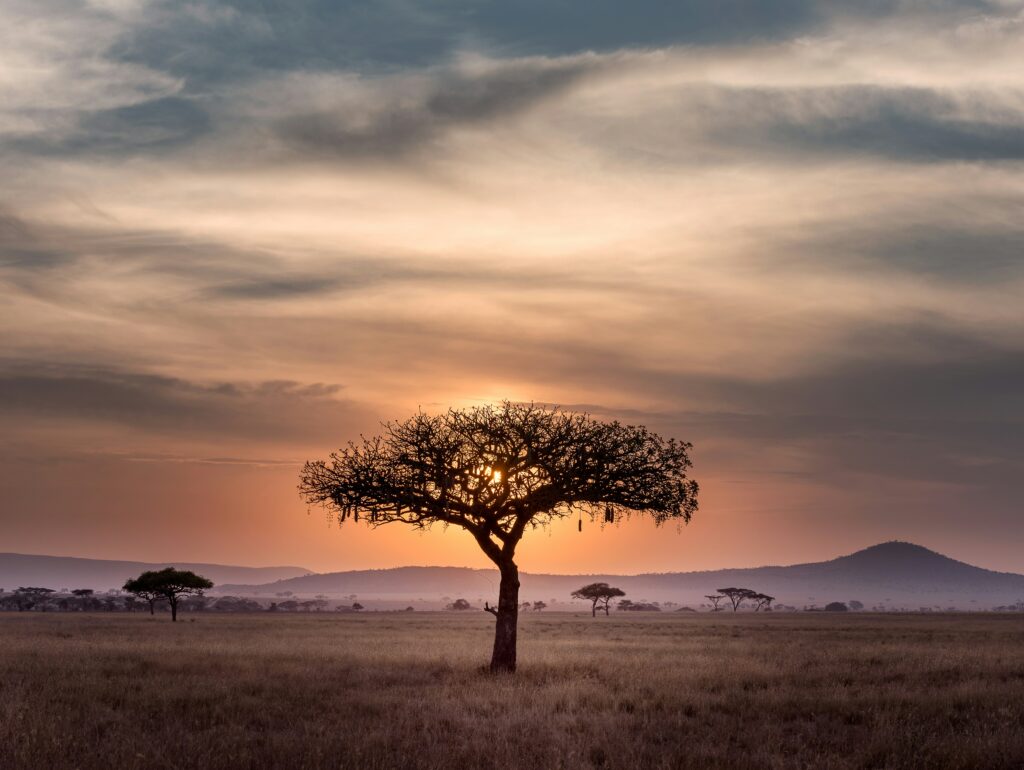
Research and knowledge are the first steps for Tanzania Travel Business Assistance. Here is a fact file for Tanzania to get you started. Contact us if you are looking to start a business in or expand your market to Tanzania. We have consultants ready to help you on the ground in Tanzania.
Expand your business horizon with confidence – Book your free consultation with Travel Business Assistance now.
Basic Facts
Origin of the name: The name “Tanzania” was created as a clipped compound of the names of the two states that unified to create the country: Tanganyika and Zanzibar. It consists of the first three letters of the names of the two states (“Tan” and “Zan”) and the suffix, “ia” to form Tanzania. The name Tanganyika was actually formulated accidentally by the early German (explorers) in Tanganyika, when they inquired from the local people what was the name of the place they were at then. The locals replied, this is “Tanga”. And what was the name of the land beyond Tanga, they asked. Just “Nyika” (meaning, just the plain land), the locals replied. Then the name Tanga (with its) Nyika or Tanganyika was born ever since!
History: According to evidence at Olduvai Gorge and in the Manonga Valley, Tanzania may be humanity’s place of origin. Around AD 500 Bantu peoples, the ancestors of the majority of the modern population, began entering the area. Arab coastal settlement and the introduction of Islam took place between AD 800 and 900. Around AD 1200 the Omanis settled in Zanzibar; in collaboration with some of the coastal peoples of the mainland, they set up a slave trade.
In 1884 Dr Karl Peters journeyed into the interior to acquire territory, through treaties with chiefs, on behalf of the German emperor. In the late 1880s Germany took over the area from the coast to (and including) Ruanda and Urundi, calling it the Protectorate of German East Africa. In 1905–06 there was an all-out rebellion. At the time, Britain was concerned with the islands of Zanzibar and Pemba, which were declared a British Protectorate in 1890. In 1919, the League of Nations gave Britain a mandate to administer part of German East Africa, now known as Tanganyika. (Belgium, with a similar mandate, took over the administration of Rwanda and Burundi.) In 1946 Tanganyika became a UN trust territory. A legislative council was set up in 1926. It was enlarged in 1945 and restructured in 1955 to give equal representation to Africans, Asians and Europeans, sitting as 30 ‘unofficials’ with the 31 ‘officials’. In 1954, a schoolteacher, Julius Nyerere, founded the Tanganyikan African National Union (TANU), which promoted African nationalism and won a large public following. The colonial authorities responded with constitutional changes increasing the voice of the African population while reserving seats for minority communities. Elections were held in 1958–59 and again in 1960. The result was overwhelming victory for TANU, which by this period was campaigning for independence as well as majority rule. The new government and the UK agreed at a constitutional conference to full independence for Tanganyika in December 1961. Zanzibar achieved independence in 1963 as a separate country. Tanganyika became a republic in December 1962, one year after achieving independence, and the first presidential election brought the TANU leader, Julius Nyerere, to the presidency. In 1965 the constitution was changed to establish a one-party system. Meanwhile, in Zanzibar, the Sultan was overthrown in a revolution in January 1964, the constitution was abrogated and the country became a one-party state under the Afro-Shirazi Party. In April 1964 Tanganyika and Zanzibar united as the United Republic of Tanzania.
Government: The United Republic of Tanzania is a republic with an executive president. The president is elected in separate presidential elections held simultaneously with general elections; both elections are held by direct popular vote every five years. The president must represent a registered political party, and is permitted to serve a maximum of two terms. The president appoints a prime minister who serves as the government leader in the Assembly. The president selects the cabinet from the National Assembly. He or she may also nominate 10 non-elected members of parliament who can serve in the cabinet. The unicameral legislature is the National Assembly. Some of the members are directly elected by universal adult suffrage (in 239 constituencies in 2010). Other members include the attorney-general; female members nominated by the parties in proportion to the number of seats they hold in the Assembly; up to ten presidential appointees and five delegates from the Zanzibar parliament.
Official Language: The two official languages of Tanzania, Swahili and English, are used in varying degrees of fluency for communication with other populations. According to the official national linguistic policy announced in 1984, Swahili is the language of the social and political sphere as well as primary and adult education, whereas English is the language of secondary education, universities, technology, and higher courts. There are more speakers of Swahili than of English in Tanzania.
Indigenous Languages: According to Ethnologue, there are a total of 126 languages spoken in Tanzania. Two are institutional, 18 are developing, 58 are vigorous, 40 are endangered, and 8 are dying. There are also three languages that recently became extinct. Most languages spoken locally belong to two broad language families: Niger-Congo (Bantu branch) and Nilo-Saharan (Nilotic branch), spoken by the country’s Bantu and Nilotic populations, respectively. Additionally, the Hadza and Sandawe hunter-gatherers speak languages with click consonants. The Cushitic and Semitic ethnic minorities speak languages belonging to the separate Afro-Asiatic family, with the Hindustani and British residents speaking languages from the Indo-European family.
Population: Estimations of the Tanzania population are of 65,642,682 inhabitants (2023 estimates). Tanzania is the 23th most populated nation in the world, the 5th most populous in Africa.
Time Zone: Tanzania currently observes Eastern Africa Time (EAT). Eastern Africa Time is consistent with UTC +3. The Eastern Africa Time does not have an associated daylight-saving time. The Eastern Africa Time applies to 10 countries: Comoros, Djibouti, Eritrea, Ethiopia, Kenya, Madagascar, Mayotte, Somalia, Tanzania, Uganda.
Climate: Along the coast and in the off shore islands of Tanzania, the average temperature ranges between 27°C and 29°C, while in the central, northern and western parts temperatures range between 20°C and 30°C. Temperatures are higher between December and March, and coolest between June and July. The long rains begin in March and end in May, while the short rains begin in October and continues to early December. In general, annual rainfall varies from 550 mm in the central part of the country up to 3690 mm in some parts of south-western highlands.
Borders: Tanzania neighboring countries are Kenya and Uganda to the North; Rwanda, Burundi and Democratic Republic of the Congo to the West; Zambia, Malawi and Mozambique to the South. Tanzania has a 1,424km long coastline to the Indian Ocean.
Size: Total Tanzania area is of about 947,300 sq km of which land: 885,800 sq km and water: 61,500 sq km. It is to be noted that area numbers include the islands of Mafia, Pemba, and Zanzibar. Tanzania is slightly larger than twice the size of California, or slightly larger than twice the size of Sweden.
Religion: Christianity is the largest religion in Tanzania, with a substantial Muslim minority. Smaller populations of Animists, practitioners of other faiths, and religiously unaffiliated people are also present. Tanzania is a secular state and freedom of religion is enshrined in the country’s constitution.
Current statistics on the relative sizes of various religions in Tanzania are limited because religious questions have been eliminated from government census reports since 1967. According to the Association of Religion Data Archives (ARDA), 55.3% of the population is Christian, 31.5% is Muslim, 11.3% practices traditional faiths, while 1.9% of the population is non-religious or adheres to other faiths as of 2020.
Currency: The shilling (Swahili: shilingi; abbreviation: TSh; code: TZS) is the currency of Tanzania. It is subdivided into 100 cents (senti in Swahili). The Tanzanian shilling replaced the East African shilling on 14 June 1966 at par.
Currently, the Tanzanian shilling circulates in both coin and banknote form: Coins have denominations of 50, 100, 200 and 500 shilingi. The current series of coins are all made from brass, except for the 500 shilling, which is nickel-plated steel. Banknotes currently in circulation have 500, 1000, 2000, 5000 and 10,000 shilingi denominations.
Current exchange rate is of 2,507.5 Tanzanian shillings to 1 US Dollar, or 3,064.23 Tanzanian shillings to 1 Great British Pound (11 November 2023).
https://www.oanda.com/currency-converter/en/?from=TZS&to=USD&amount=2507.5
https://www.oanda.com/currency-converter/en/?from=TZS&to=GBP&amount=3064.23
history and Key Events
Precolonial & colonial Era
- 9 million years ago – Tanzania is one of the oldest continuously inhabited areas on Earth, with traces of fossil remains of humans and hominids in the Olduvai Gorge between 1.9 million-19,000 years ago.
- 2,000BC onwards – waves of migration from north and from west into the region.
- 8th-9th Century AD – Traders from the Persian Gulf and India reach the east African coast, bringing Islam to the area.
- 10th Century – Zanzibar grows to become one of the key Swahili trading towns along the coast.
- 1498 – Portuguese explorer Vasco da Gama visits Tanzanian coast. Portugal succeeds in controlling most of the East African coast, until it is ousted from Zanzibar in 1699 by Omani Arabs.
- 1840 – Omani Sultan Said bin Sultan moves his capital to Zanzibar.
- 1884 – German Colonisation Society begins to acquire territory on the mainland.
- 1886 – Britain and Germany sign an agreement allowing Germany to set up a sphere of influence over mainland Tanzania, except for a coastal strip under the sultan of Zanzibar, which is a British protectorate.
- 1888-89 – Abushiri revolt or the slave trader revolt. An uprising led by Abushiri ibn Salim al-Harthi of the Arab and Swahili population of coastal areas that had been granted to Germany, under protest, by the sultan of Zanzibar. Suppressed by German troops.
- 1914-1918 – World War One.
- 1916 – British, Belgian and South African troops occupy most of German East Africa.
- 1919 – League of Nations gives Britain a mandate over Tanganyika – today’s mainland Tanzania.
- 1929 – Tanganyika African Association founded.
- 1946 – United Nations converts British mandate over Tanganyika into a trusteeship.
- 1954 – Julius Nyerere and Oscar Kambona transform the Tanganyika African Association into the Tanganyika African National Union.
Independence
- 1961 – Tanganyika becomes independent with Julius Nyerere as prime minister.
- 1962 – Tanganyika becomes a republic with Nyerere as president.
- 1963 – Zanzibar becomes independent.
- 1964 – Zanzibar revolution. Sultan of Zanzibar is overthrown in a violent, left-wing revolution.
- Tanganyika and Zanzibar merge to become Tanzania with Nyerere as president and Afro-Shirazi leader Abeid Amani Karume as vice-president.
- 1967 – Nyerere issues the Arusha Declaration, which launches a drive for socialist economic self-reliance.
- 1974 – Government announces plan to move capital from Dar es Salaam on the coast, to the more central city of Dodoma
- 1985 – Julius Nyerere retires.
- 1992 – Constitution amended to allow multi-party politics.
- 1995 – Benjamin Mkapa chosen as president in Tanzania’s first multi-party election.
- 1996 – Dodoma officially becomes the new capital of Tanzania.
- Huge new gold mine, Bulyanhulu, opens near northern town of Mwanza, making Tanzania Africa’s third largest producer of gold.
- 2010 – Tanzania joins its neighbours in forming a new East African Common Market, intended to integrate the region’s economy.
- 2012 – Major discovery of gas reserves off the coast of Tanzania.
- 2016 – Tanzania and Uganda agree to build east Africa’s first major oil pipeline.
Tanzanian Food
Nestled on the East African coast, Tanzania offers a glorious mix of different cultures and people. This melting pot gives rise to a delicious, varied cuisine you will struggle to find elsewhere. Coastal regions and the semi-autonomous island of Zanzibar offer a wide range of mouthwatering flavors influenced by Bantu, Persian, and Indian cuisines.
Spices such as turmeric, cumin, cardamom, cinnamon, cloves, saffron, black pepper, and nutmeg as well as coconut, herbs such as cilantro, lemongrass, and ginger, and stews are the standard – whether you want to enjoy an afternoon Biryani lunch or want to snack on coffee with Kashata – the options are endless. With its proximity to the Indian Ocean, covering over 1,400 kilometers of the coast, Tanzania is never short of exotic and innovative seafood dishes.
Tanzania has its fair share of exotic foods as well. Walking the streets of commercial port Dar es Salaam in the evening, you can opt for any setting whether it’s an upscale restaurant, open-air Indian-style restaurants, or street vendors. In the latter, you will find a plethora of food and snack dishes amongst these sellers including octopus, beef hump skewers, mud creepers, prawns, Zanzibar pizza, and many more. If you want the best prices, you want to shop locally in markets (sokoni) and local neighborhood shops (Duka). Below is a selection of the 20 most popular Tanzanian dishes.
Mtori (Banana Soup) It is traditionally made with Kilimanjaro green bananas (ndizi mshale), which are arrow-shaped and not as flavorful as those from the northern region of Kagera and southern highlands of Mbeya. Mtori is meant to energize the body for the day’s work in the fields as well as to give much-needed nutrients for nursing mothers.
Ugali Dagaa (Porridge and Sardines) ugali is a solid carb meal made with coarsely grounded corn or a mix of corn and cassava flour. It is eaten throughout Tanzania, with different regions incorporating sardines, as available. Southerners get theirs from Lake Nyasa, whilst westerners get theirs from Lake Tanganyika.
Biriyani ya Kuku (Tanzanian Chicken Biryani) Traditionally, biriyani is prepared with lamb, but can easily be prepared with chicken, beef, lamb, goat, or seafood. Long grain rice (with half of it stained with yellow food coloring) is mixed with a thick, hearty sauce made with vegetables, and numerous aromatic spices such as cumin, turmeric, and yogurt.
Wali na Maharage ya Nazi na Mchicha (Rice with Coconut Beans and Amaranth Leaves) are a staple of every Tanzanian home. Typically, soy or kidney beans are boiled until soft, but, not gooey. They are then stewed with cooking oil, onions, tomatoes, tomato paste, spices such as turmeric and cumin, and coconut milk. Amaranth leaves are cooked with very little oil, onions, spices, and chilies – water is never added because the leaves are highly absorbent
Mchemsho is a broth found in any household across Tanzania. Not only is it packed with protein, it is also a powerful hangover cure. On weekend mornings, you will find many people recovering from the previous day’s drinking affairs with a hot bowl of mchemsho.
Samaki na Viazi Vitamu (Fish and Sweet Potatoes) is a true jewel. Larger tilapia fish are cut horizontally into three pieces and boiled with sweet potatoes, onions, tomatoes, carrots, pepper, salt, and cooking oil. All this dish uses is a little chilli.
Wali Maini Rosti (Rice and Liver Stew) is a mainstream Tanzanian dish you will find at any restaurant, local café, or street food stall (mama ntilie). Cubed liver chunks are stewed with carrots, onions, garlic, tomatoes, chilies, and peppers with oil and very little water for an aromatic and filling meal. The maini rosti is then, served with white rice or chapatti.
Kashata (Tanzanian Style Peanut Brittle) Kashata is a delicious mix of milk, peanuts, sugar, cinnamon and nutmeg, and is served with unsweetened black coffee in espresso-style Persian cups. The Kashata acts as a sweetener, you drink the coffee and take a tiny bite after each sip.
Things to do and see in Tanzania
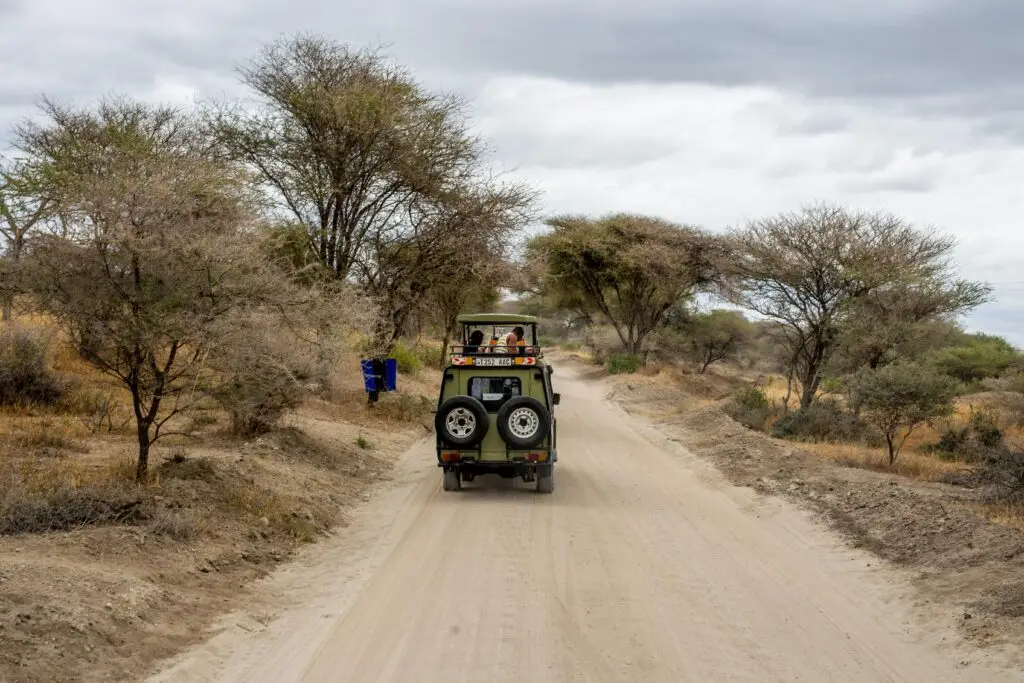
Tanzania is home to some of Africa’s most famous national parks and natural attractions, including majestic Mount Kilimanjaro. Consequently, the most popular things to do in Tanzania and the reason many people visit the country, are safaris and wildlife-related adventures. Most visitors will find themselves passing through Dar es Salaam and heading out to the wilderness areas and other destinations. For those who want to spend some time soaking up the sun, the beautiful beaches of Zanzibar beckon. Off Pemba and Mafia islands is another kind of natural wonder, appreciated by scuba divers and snorkelers who come here from around the world to experience the coral gardens, colorful fish, and crystal clear waters.
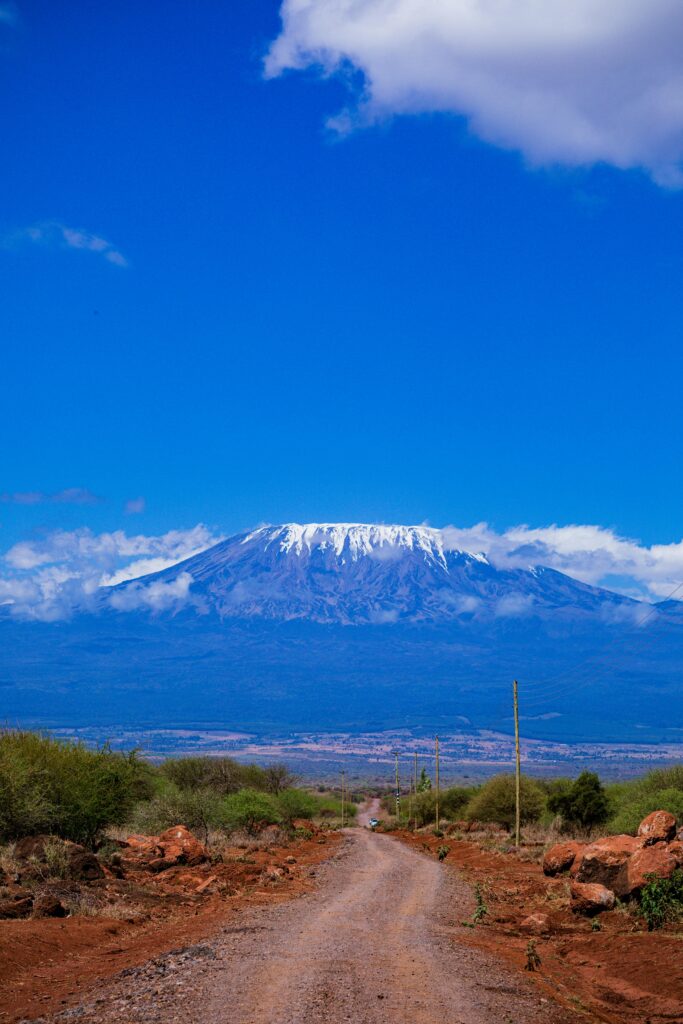
Mount Kilimanjaro: Mount Kilimanjaro is Africa’s highest peak (5,895 m) and Tanzania’s most iconic image. Mount Kilimanjaro National Park, unlike other parks in northern Tanzania, is not visited for the wildlife but for the chance to stand in awe of this beautiful snow-capped mountain and, for many, to climb to the summit.
Zanzibar Beaches: The island of Zanzibar, also called Unguja, is a major holiday destination in Tanzania and is known for its beautiful beaches. Part of the Zanzibar archipelago, which consists of the islands of Zanzibar and Pemba, this island has some of the best beaches in the world.
Olduvai Gorge: is an archeological site situated on a series of fault lines, where centuries of erosion have revealed fossils and remnants of early mankind. As early as 1911, a German professor found some fossil bones while looking for butterflies in Olduvai Gorge. In a later expedition, the Leakeys collected skull fragments, a skull, and bones determined to be approximately 2 million years old. Tools and hunting weapons from 1 to 1.5 million years ago were also discovered in Olduvai Gorge.
Visit the Maasai Warriors’ village to learn more about their way of life. The Maasai are a nomadic group of cattle herders and breeders who are renowned for their vibrant dress, lively traditional dance, and intricate beadwork. During your stay at the community, you might participate in Maasai dancing, watch warriors make fire, toss spears, or watch women produce beaded jewelry.
The world-famous Serengeti National Park is a vast treeless plain with millions of animals living here or passing through in search of fresh grasslands. It’s most famous for the annual wildebeest migration but you can also see the Big Five here, and nearly 500 species of birds have been recorded on the Serengeti.
Ngorongoro Conservation Area: Located between the Serengeti and Lake Manyara, the Ngorongoro Conservation Area is home to the famous volcanic Ngorongoro Crater and is one of Tanzania’s most popular wildlife viewing areas. This huge volcanic crater has a permanent supply of water, which draws thousands of animals who stay in this area.
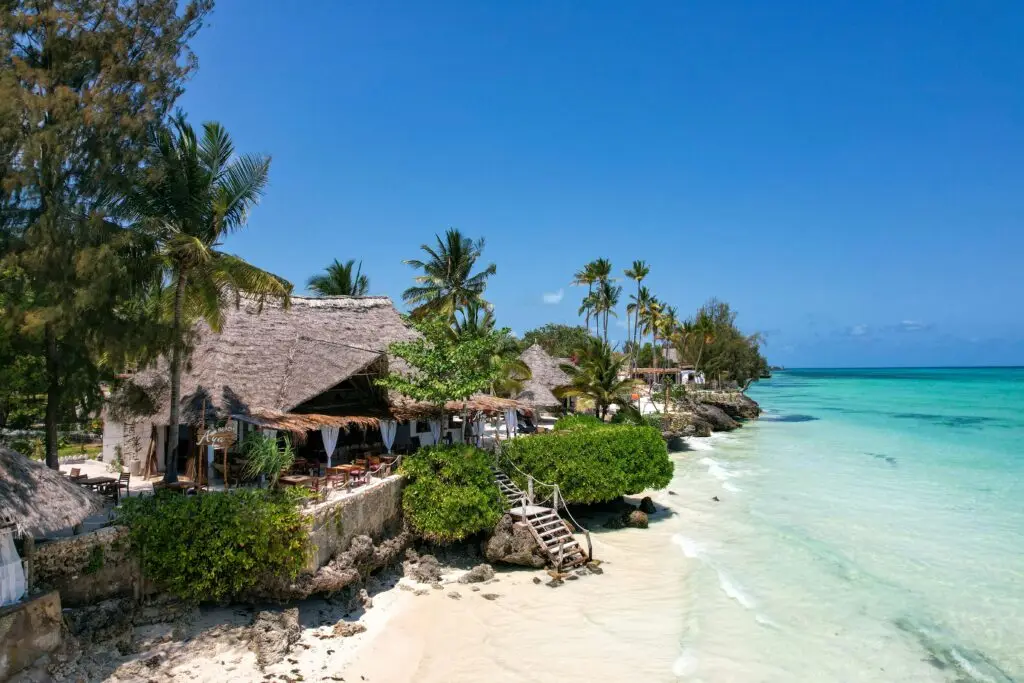
Explore the Historical Ruins of Kilwa Kisiwani and Ruins of Songo Mnara: The remains of two great East African ports admired by early European explorers are situated on two small islands near the coast. From the 13th to the 16th century, the merchants of Kilwa dealt in gold, silver, pearls, perfumes, Arabian crockery, Persian earthenware and Chinese porcelain; much of the trade in the Indian Ocean thus passed through their hands.
The Tanzanite Museum: Visiting the Tanzanite Experience Museums will give you a chance to delve deep into history and enjoy one of the main attractions in Arusha. It is an exciting journey that leads you right into the heart of this precious gemstone. Through a guided tour, visitors understand why Tanzanite is not only so rare and sought after, the complexities involved with its mining, the skills involved in cutting and polishing as well as enjoy the stories and myths surrounding the gemstone.
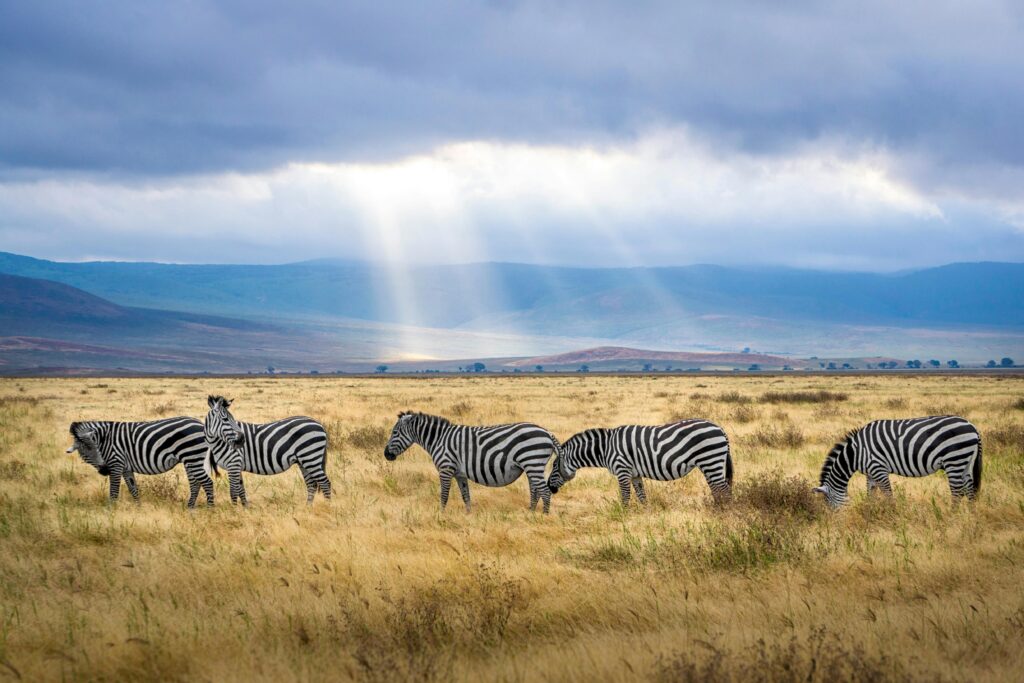
Economy
Tanzania has achieved high growth rates based on its vast natural resource wealth and tourism with GDP growth in 2009-17 averaging 6%-7% per year. Dar es Salaam used fiscal stimulus measures and easier monetary policies to lessen the impact of the global recession and in general, benefited from low oil prices. Tanzania has largely completed its transition to a market economy, though the government retains a presence in sectors such as telecommunications, banking, energy, and mining. The economy depends on agriculture, which accounts for slightly less than one-quarter of GDP and employs about 65% of the work force, although gold production in recent years has increased to about 35% of exports. While tourism holds much potential, it remains relatively untapped in Tanzania, considering the diverse range of services it can offer in the industry. The financial sector in Tanzania has expanded in recent years and foreign-owned banks account for about 48% of the banking industry’s total assets. The World Bank, the IMF, and bilateral donors have provided funds to rehabilitate Tanzania’s aging infrastructure, including rail and port, which provide important trade links for inland countries. The new government elected in 2015 has developed an ambitious development agenda focused on creating a better business environment through improved infrastructure, access to financing, and education progress.
Doing business in Tanzania
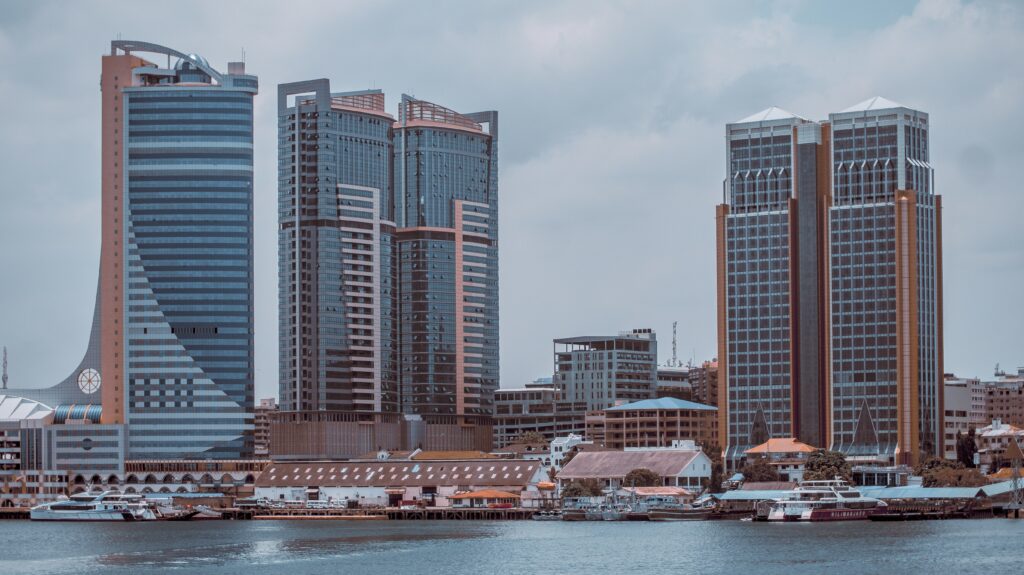
Ease of Doing Business Index Scores
Overall score: 54.5 (2020)
Starting a business score: 74.4 (2020)
Trading across Borders score: 20.2 (2020)
Enforcing Contracts score: 61.7 (2020)
Legal System: The Tanzanian legal system is based on the English Common Law, which derives from its British colonial legacy. However, unlike the unwritten British constitutional system, Tanzania has a written constitution, which is the first source of law. Court rulings are made in English (Despite the fact that the official language of Tanzania is Swahili). Court rulings are made in English (Despite the fact that the official language of Tanzania is Swahili). Equality before the law and the right to fair trial of nationals and Foreigners are guaranteed by the Article 13 of the Tanzanian Constitution. The independence of the judiciary is guaranteed by the Article 107 of the Tanzanian Constitution. As such, courts have freedom and are required “only to observe the provisions of the Constitution and those of the laws of the land”.
Company creation procedures:
- Verify the availability of the proposed company name online at the Business Registration and Licensing Authority (BRELA)
- Obtain a notarized declaration of compliance
- Apply for company incorporation and obtain the certificate of incorporation online at the Business Registration and Licensing Authority (BRELA)
- Obtain the taxpayer identification number (TIN) certificate at the Tanzania Revenue Authority (TRA)
- Apply for a business license at the Ministry of Industry, Trade and Investment (MITI) or the Local Government Authorities (LGAs)
- Apply for the VAT certificate at the Tanzania Revenue Authority (TRA)
- Register for the workmen’s compensation insurance at the Workers Compensation Fund (WCF) and Tanzania Insurance Regulatory Authority (TIRA)
- Register with the Occupational Safety and Health Authority (OSHA)
- Receive inspection from the Occupational Safety and Health Authority (OSHA)
- Obtain Social Security registration number from the Social Security Regulatory Authority (SSRA)
Tanzania Investment Centre (TIC)
The Tanzania Investment Centre (TIC) was established in 1997 to be the Primary Agency of the Government to coordinate, encourage, promote and facilitate investment in Tanzania and to advise the Government on investment policy and related matters. The agency deals with all enterprises whose minimum capital investment is not less than USD500,000 if foreign-owned or USD100,000 if locally-owned. TIC grants Certificates of Incentives under authority conferred upon it by Part III, Section 17 (1-8) of Tanzania Investment Act, 1997. Holders of a certificate of incentives are entitled to various investment incentives as stipulated in the Investment Act, 1997
Tanzania Investment Centre Functions:
- Creating and maintaining a positive climate for private sector investment;
- Providing advice to the Government on investment-related matters;
- Stimulating local and foreign investments;
- Facilitating foreign and local investors;
- Stimulating and supporting the growth of Entrepreneurship and SMEs in Tanzania;
- Providing and disseminating up-to-date information on investment opportunities and incentives available to investors;
- Monitoring the Tanzania business environment and growth of Foreign Direct Investment (FDI) in the country.
As an investment facilitator, Tanzania Investment Centre Assistance:
- Assists investors to obtain all permits, licenses, and visas;
- Grants land derivative rights to investors;
- Assists investors to navigate administrative and regulatory hurdles;
- Provides an ‘aftercare’ service to TIC registered investors.
Tanzania Investment Centre One Stop Facilitation Center: Currently, 12 government institutions are currently providing services at the TIC, namely the Ministry of Labour, the Ministry of Lands, the Immigration Office, the National Identification Authority (NIDA), the National Environment Management Council (NEMC), the Tanzania Revenue Authority (TRA), the Business Registration and Licensing Agency (BRELA), the Tanzania Bureau of Standards (TBS), the Tanzania Medicines and Medical Devices Authority (TMDA), the Occupational Safety and Health Authority (OSHA), the Tanzania Electric Supply Company (TANESCO) and TIC itself.
Why invest in Tanzania
Tanzania enjoys an abundance of natural wealth, which offers tremendous investment opportunities for investors. These include an excellent geographical location (six land locked countries depend on Tanzania ports as their cheapest entry and exit ports); arable land; world renowned tourist attractions (Serengeti, Kilimanjaro, Ngorongoro, and the Spice islands of Zanzibar); natural resources; a sizeable domestic and sub regional market; a wide local raw materials supply base; abundant and inexpensive skills; assurance of personal safety; warm friendly people and a suitable market policy orientation.
The following are among the major reasons why you should invest in Tanzania:
- High degree of investment security because of unparalleled political stability that is strife-free without ethnic division; democratic rule that respects diversity of opinion and a strong tradition of constitutionality and rule of law;
- Business-friendly Macro-Economic Stability with low inflation (4.2%), stable exchange rates supported by unrestricted and unconditional transferability of profits, loan repayments, emoluments, royalties, fees and changes;
- Simplified bureaucracy, streamlined through the acclaimed services of the Tanzania Investment Centre which is a one-stop-facilitation agency of government serving registered investors and businesses;
- Successful economic liberalization measures commended by both the World Bank and the IMF with business-supportive legislation continually being improved through genuine dialogue between government and the private sector
- A well-balanced package of incentives to investors with additional negotiated benefits to strategic investors
- Rapidly emerging as the most effective entry point and gateway for trade into Eastern, Southern and Central Africa; FAVOURABLE GEOGRAPHICAL LOCATION OF TANZANIA
- Lucrative investment opportunities in infrastructure, privatization and value adding facilities.
- Investment guarantees, and settlement of Disputes. Investments in Tanzania are guaranteed against Political risks, Nationalization and Expropriation.
- Any foreign business operating in Tanzania may obtain credit from domestic financial institutions up to the limits established by the Bank of Tanzania. Major banks like Standard Chartered, ABSA, Barclays, Citibank, Stanbic, Exim etc. have invested in Tanzania.
- Existing investors are ready to expand their businesses in Tanzania as depicted in the recent survey conducted by TIC, BoT and NBS.
- Tanzania has been often rated as number one investment destination with the highest sales growth by the UNIDO´s Report of Foreign Investor Perception Survey.
Investment Opportunities:
Certainly, Tanzania stands out as an excellent investment destination in Africa at present. It offers a multitude of investment prospects and business opportunities for you to discover and engage in.
- Mining and Metals: If you have an eye for the glitter, Tanzania is a treasure trove. Rich reserves of industrial minerals, precious metals, and gemstones, including gold, diamonds, and tanzanite, make it a leading African economy in attracting Foreign Direct Investments (FDIs). Initiatives like caustic soda refinery construction and mineral smelter development underscore the country’s potential.
- Agriculture: Tanzania’s agricultural sector is not just about crops; it’s about cultivating opportunities. Vast arable land, including 29.4 million hectares suitable for irrigation, sets the stage for large-scale commercial cultivation. Sugarcane, rice, wheat, coffee, and more – the diversity beckons investors.
Efforts to expand irrigation systems and improve agricultural research and development open up possibilities in agro-industries and agro-processing.
- Tourism: Calling all tourism enthusiasts! Tanzania’s tourism industry is not just a sector; it’s an experience. Contributing significantly to GDP, investments in tourist hotels, recreational parks, golf courses, and diverse activities offer attractive prospects. With over 25% of its land dedicated to wildlife and natural resource conservation, Tanzania’s renowned wildlife resources are a magnet for international tourists.
- Services (ICT): In the realm of Information and Communication Technology (ICT), Tanzania is not just catching up; it’s leaping forward. A decade of remarkable growth in communications, marked by increased subscribers and wider coverage, makes the ICT sector a promising investment opportunity. From mobile services to network/data value-added services, the digital landscape is ripe for exploration.
Livestock: For those interested in the four-legged investment, Tanzania’s abundant natural resources for livestock production beckon. With plans to modernize existing ranches and establish new ones, opportunities abound in beef, dairy, chicken, and more.
Tanzania Flagship Projects
The East African Crude Oil Pipeline Project (EACOP) is a pipeline that will transport oil produced from Uganda’s Lake Albert oilfields to the port of Tanga in Tanzania where the oil will then be sold onwards to world markets. The pipeline is buried and once topsoil and vegetation have been re-instated people and animals will be able to cross freely anywhere along its length. EACOP runs 1,443km from Kabaale, Hoima district in Uganda to the Chongoleani Peninsula near Tanga Port in Tanzania. 80% of the pipeline is in Tanzania. It is a buried thermally insulated 24″ pipeline along with six pumping stations (two in Uganda and four in Tanzania) ending at Tanga with a Terminal and Jetty. Here crude oil will be loaded onto tankers.
Julius Nyerere Hydropower Station: Tanzania has launched the impoundment of Julius Nyerere hydroelectric dam on the Rufiji River. Also known as the Rufiji Hydropower project, the 2,115MW dam will be the largest by installed capacity in East Africa and among the largest in Africa comparable to Egypt’s Aswan High Dam (2100MW) Mozambique’s Cahora Bassa Dam (2075MW) and Angola’s Lauca Dam (2069MW). The power generated will be evacuated via a new 400kV high voltage power line to a substation where the power will be integrated into the national electricity grid.
Health
Proof of yellow fever vaccination may be required for entry to Tanzania if arriving from or transiting through a yellow fever risk country.
It is strongly recommended that you visit a travel vaccination clinic and get other vaccinations and a prophylaxis for malaria.
COVID-19
You don’t currently need a vaccine to enter Tanzania, COVID vaccination passports or certificates are not mandatory to enter Tanzania.
Immigration
Foreigners seeking to enter the United Republic of Tanzania should be in possession of a valid passport or any other authorized travel document valid for not less than six months, a document other than the National passport issued by a state or an International Organization and recognized by the government of the United Republic of Tanzania as a travel document.
You can now apply for an Online Visa to visit the United Republic of Tanzania (both Tanzania Mainland and Zanzibar). You are required to fill in the online form, make payment, and submit your application online. Your form will be internally reviewed and processed.
Applicants will be notified through their e-mails whether their applications have been accepted or rejected. They may also TRACK their application statuses through the online system. Applicants may as well be required to visit the nearest Tanzanian Embassies or Consular Offices for interviews.
All international visitors to Tanzania can apply for their visas (e-Visa) online at the following link: https://visa.immigration.go.tz/.
Interesting Facts About Tanzania
Dodoma Is Actually the Official Capital of Tanzania. Most people don’t know this, but it’s one of the most important Tanzania facts. After a nationwide referendum in 1974, Dodoma became the new capital of Tanzania. The reasoning was that creating the capital city in the country’s central region would help spark economic growth in the area – and centralize the capital, too. Which does kind of make sense. Tanzania’s Old Capital, Dar Es Salaam, Means “Home Of Peace”. And the city’s founder, Sultan Majid bin Said of Zanzibar, gave it that name. He started building it right next to the already-existing town of Mzizi (“Healthy Town” in Swahili).
National Anthem: Tanzania has the Same National Anthem As South Africa And Zimbabwe. This is one of those interesting Tanzania facts that are easy to forget. Not many countries in the world get to share the distinction of having the same national anthem as two other countries, but Tanzania is one of them. The anthem in question, “Nkosi Sikelel’ iAfrika” (“God Bless Africa”), was a Xhosa anthem, a pan-African liberation song composed by Enoch Sontonga. The Swahili version for Tanzania is called “Mungu Ibariki Afrika.” South Africa adopted it as recently as 1997.
Tanzania Travel Business Assistance
Are you planning to move your business to Tanzania or open up Angola as a new market? Perhaps there is a conference in Tanzania you need to attend and you need some help. We are here for your Tanzania Travel Business Assistance.
